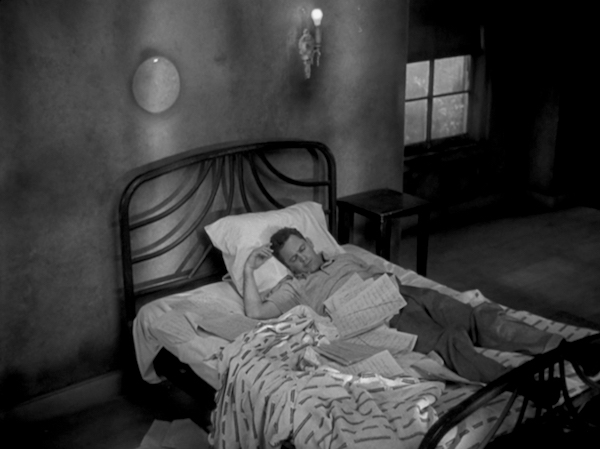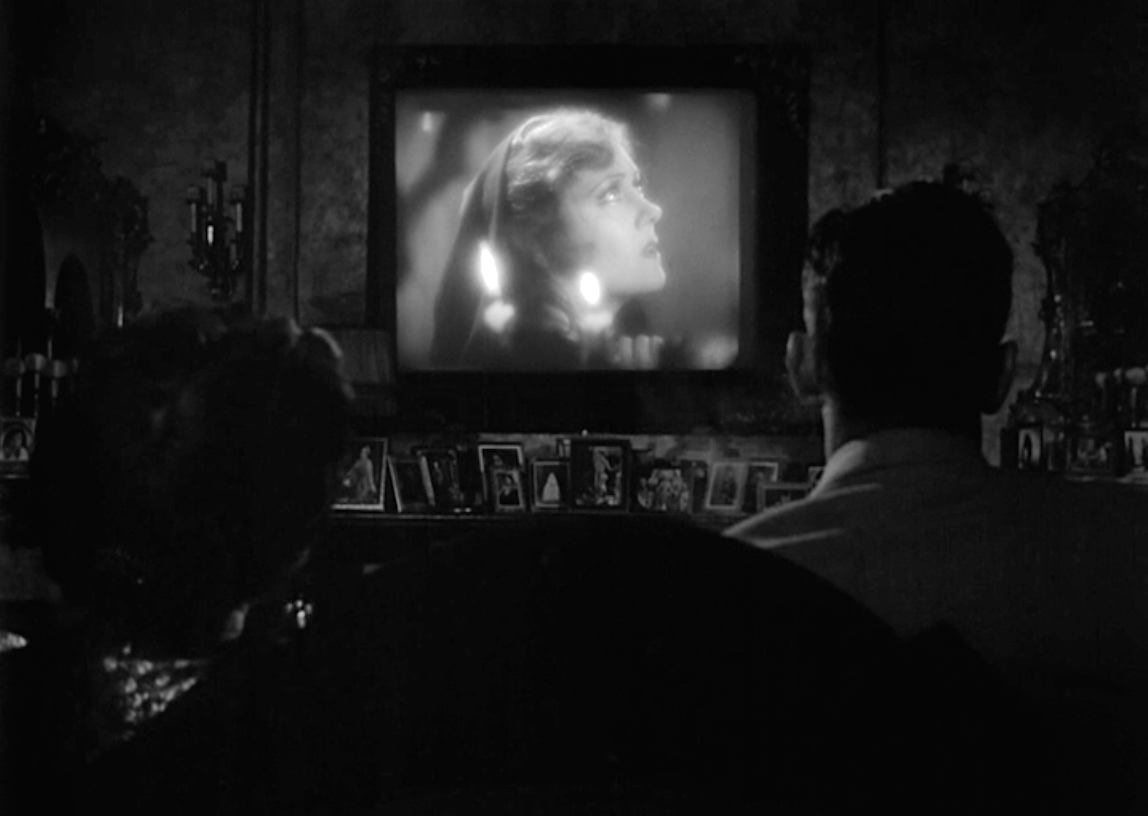 When I issued the challenge of Hit Me With Your Best Shot: Sunset Blvd (1950), with the caveat that you couldn't use that final close up for Mr DeMille, I knew it would make for a great episode. What a stone cold classic it is, filled with potent images in every scene that are too often taken for granted given the combined impact of its haunting iconic opening and closing. What I had dumbly not remembered was how intoxicatingly full Sunset Blvd feels on every repeat viewing inbetween. You can go into each screening with one topic in mind ("I shall write about this") and come out with a dozen more topics boiling, your original thoughts crowded out of the mind's frame. So I must painfully set aside the self-deprecating script, the gestural bravado, the timelessness of its time capsule, its shame-trigger economics and sexuality. So much of it distracts from the real purpose of HMWYBS which is to zero in on a particular image from a public piece of art that seizes your individual imagination with its beauty or thematic resonance or what not, and discuss.
When I issued the challenge of Hit Me With Your Best Shot: Sunset Blvd (1950), with the caveat that you couldn't use that final close up for Mr DeMille, I knew it would make for a great episode. What a stone cold classic it is, filled with potent images in every scene that are too often taken for granted given the combined impact of its haunting iconic opening and closing. What I had dumbly not remembered was how intoxicatingly full Sunset Blvd feels on every repeat viewing inbetween. You can go into each screening with one topic in mind ("I shall write about this") and come out with a dozen more topics boiling, your original thoughts crowded out of the mind's frame. So I must painfully set aside the self-deprecating script, the gestural bravado, the timelessness of its time capsule, its shame-trigger economics and sexuality. So much of it distracts from the real purpose of HMWYBS which is to zero in on a particular image from a public piece of art that seizes your individual imagination with its beauty or thematic resonance or what not, and discuss.
So Joe McGillis will have to wait. Which is a shame. He's worth at least 11 essays of his own according to my easily distracted notes. They're messier than Norma's epic handwritten "Salome" opus which visually buries Joe long before she works up enough actual crazy to really bury him. [More...]
 if anyone knows of a brilliant essay on Joe's Dream - point me to it -- I am here for it
if anyone knows of a brilliant essay on Joe's Dream - point me to it -- I am here for it
But Joe is dead as the movie begins so he can wait. (Small mercy: can he be buried next to the beloved chimp?)
We're here to talk Norma Desmond.
It's actually alarming to realize in 2015 that her infamous film ending closeup would barely even be called a "closeup" anymore (it's arguably a medium shot) since the definition of shots seems to have changed as the camera has pushed in ever closer over the decades; soon movies will only be macro shots of eyes and nostrils and a "long shot" will mean capturing someone from, like, the waist up. What's far more pleasurable but just as mind-boggling is to attempt to absorb the full range of genius that Billy Wilder and cinematographer Joseph Feitz are deploying to sell the idea of this mythic being who is also all too human. Consider how harsh she's lit, in wide klieg lights from underneath, in the final scene, or how painful that pinpoint spotlight looks when she's magnified for her beauty treatments. Contrast those images to this one, which is just as harshly lit but defies expectations entirely.
 This is my Best Shot
This is my Best Shot
It reads for a split second like a violent jolt, a hard cold spotlight thrown on a faded woman that only a few employees even recognize. Norma will shield her eyes in just a moment but for the first second she only drinks up the light like it's sunshine. We expect cold humiliating truth but what we get is the film's most genuinely warm moment, Norma transported back to her heyday, suddenly beloved, even if its only a temporary fix.
This is, to my mind, one of the film's two best scenes (which is saying a lot) but it's also a call back to the other best one in which Joe and Norma screen her old movies. The earlier scene is even more complicated in its understanding of Norma as an idea, a myth, who happens to be three separate women: "NORMA DESMOND" is the immortal we briefly glimpse onscreen and who fills every nook and cranny of the delapitated mansion with her frozen image, painted and photographed; Former Norma Desmond is the effortfully glamourous aging queen, who people will still encircle with excitement should they accidentally be reminded that she's a celebrity; and, finally, there's the shut-in millionaire whose actual name probably isn't Norma Desmond at all though she has surely forcefully forgotten her birth name by now. This last woman is the woman who actually owns Joe and that he lives with though she's always conjuring the other two. It's part of the film's miracle that all three are always in conversation with each other.
 Or maybe this one. Yes, this is the Best Shot. Or at least the very best scene
Or maybe this one. Yes, this is the Best Shot. Or at least the very best scene
Multitudes of Norma. In foreground, barely visible but for dim outlines, are the wealthy tragic recluse and her handsome sadsack kept man. In the background, in sharp focus but softly lit with candles, is NORMA DESMOND, impossible to miss by design.
Underneath her in the darkness is another pack of Mini-Normas, frozen in time and framed, creating a pseudo altar for the worship of their collective self -- the big one on the screen. But where is the third Norma, "Former Norma Desmond"? She's about to reclaim the vast space in the middle between the old tragedy and the young icon, jumping up defiantly into the projector's light, the smoke in the room drifting off her like she's on fire.
Have they forgotten what a star looks like?!? I'll show them. I'll be up there again so help me.
All of Norma's selves come rushing together in defiant self-worship. They haven't forgotten. They never will.

TONIGHT:Visual Index ~ All the Sunset Blvd articles from round the web
NEXT WEDNESDAY NIGHT: Todd Haynes' [safe] (1995)